
Continuous track is a system of vehicle propulsion used in tracked vehicles, running on a continuous band of treads or track plates driven by two or more wheels. The large surface area of the tracks distributes the weight of the vehicle better than steel or rubber tyres on an equivalent vehicle, enabling continuous tracked vehicles to traverse soft ground with less likelihood of becoming stuck due to sinking.
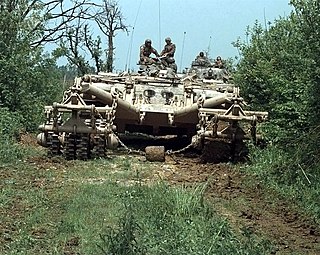
A mine roller or mine trawl is a demining device mounted on a tank or armoured personnel carrier, designed to detonate anti-tank mines. It allows engineers to clear a lane through a minefield which is protected by enemy fire.

A differential is a gear train with three shafts that has the property that the rotational speed of one shaft is the average of the speeds of the others, or a fixed multiple of that average.

The history of the tank begins with World War I, when armoured all-terrain fighting vehicles were introduced as a response to the problems of trench warfare, ushering in a new era of mechanized warfare. Though initially crude and unreliable, tanks eventually became a mainstay of ground armies. By World War II, tank design had advanced significantly, and tanks were used in quantity in all land theatres of the war. The Cold War saw the rise of modern tank doctrine and the rise of the general-purpose main battle tank. The tank still provides the backbone to land combat operations in the 21st century.

A steamroller is a form of road roller – a type of heavy construction machinery used for leveling surfaces, such as roads or airfields – that is powered by a steam engine. The levelling/flattening action is achieved through a combination of the size and weight of the vehicle and the rolls: the smooth wheels and the large cylinder or drum fitted in place of treaded road wheels.

A half-track is a civilian or military vehicle with regular wheels at the front for steering and continuous tracks at the back to propel the vehicle and carry most of the load. The purpose of this combination is to produce a vehicle with the cross-country capabilities of a tank and the handling of a wheeled vehicle.

A three-wheeler is a vehicle with three wheels. Some are motorized tricycles, which may be legally classed as motorcycles, while others are tricycles without a motor, some of which are human-powered vehicles and animal-powered vehicles.
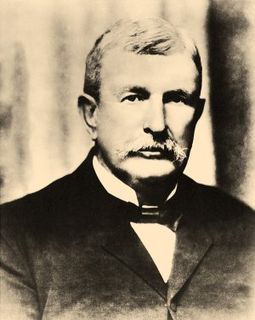
Benjamin Leroy Holt was an American inventor who patented and manufactured the first practical crawler-type tread tractor. The continuous-type track is used for heavy agricultural and engineering vehicles to spread the weight over a large area to prevent the vehicle from sinking into soft ground. He founded with his brothers the Holt Manufacturing Company.
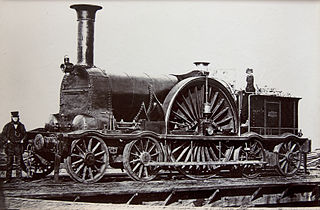
Under the Whyte notation for the classification of steam locomotives, 4-2-4 represents the wheel arrangement of four leading wheels on two axles, two powered driving wheels on one axle, and four trailing wheels on two axles. This type of locomotive is often called a Huntington type.

A drive wheel is a wheel of a motor vehicle that transmits force, transforming torque into tractive force from the tires to the road, causing the vehicle to move. The powertrain delivers enough torque to the wheel to overcome stationary forces, resulting in the vehicle moving forwards or backwards.

The Holt Gas-Electric Tank was the first prototype tank built in the United States in a collaboration between the Holt Manufacturing Company and the General Electric Company. The tank, built during 1917-1918, was the only one of its kind built, as testing proved it lacked the agility and maneuverability required. The crew number is often given as six, on the assumption there would be two machine gunners, a gunner and loader for the main gun, a driver and a commander.

The Steam Tank (Tracked) was an early U.S. tank design of 1918 imitating the design of the British Mark IV tank but powered by steam.
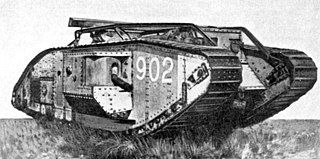
The development of tanks in World War I was a response to the stalemate that developed on the Western Front. Although vehicles that incorporated the basic principles of the tank had been projected in the decade or so before the War, it was the alarmingly heavy casualties of the start of its trench warfare that stimulated development. Research took place in both Great Britain and France, with Germany only belatedly following the Allies' lead.

The M19 Tank Transporter was a heavy tank transporter system used in World War II and into the 1950s. It consisted of a 12-ton 6x4 M20 Diamond T Model 980 truck and companion 12-wheel M9 trailer.

David Roberts was the Chief Engineer and managing director of Richard Hornsby & Sons in the early 1900s. His invention, the caterpillar track, was demonstrated to the army in 1907.

Richard Garrett & Sons was a manufacturer of agricultural machinery, steam engines and trolleybuses. Their factory was Leiston Works, in Leiston, Suffolk, England. The company was founded by Richard Garrett in 1778.

Raupenschlepper Ost was a fully tracked, lightweight vehicle used by the Wehrmacht in World War II. It was conceived in response to the poor performance of wheeled and half-tracked vehicles in the mud and snow during the Wehrmacht's first autumn and winter on the Soviet Front.
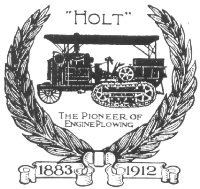
The Holt Manufacturing Company began with the 1883 founding of Stockton Wheel Service in Stockton, California, United States. Benjamin Holt, later credited with patenting the first workable crawler ("caterpillar") tractor design, incorporated the Holt Manufacturing Company in 1892. Holt Manufacturing Company was the first company to successfully manufacture a continuous track tractor By the early 20th century, Holt Manufacturing Company was the leading manufacturer of combine harvesters in the US, and the leading California-based manufacturer of steam traction engines.

The VK 45.01 (P) was the official designation for an unsuccessful gasoline-electric drive heavy tank prototype produced by Porsche in Germany in 1942. It was not selected for production and the Henschel design to the same specification was produced as the Tiger I. Most of the already produced chassis were instead rebuilt as Elefant tank destroyers.
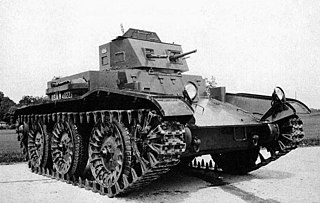
T7 Combat Car was a prototype United States light tank design of the interwar period. It could run on rubber-tired wheels on roads or mount tracks for cross-country use. Although adequate in some areas, it lacked armament compared to contemporary vehicles and the project was cancelled after only one was built.




















